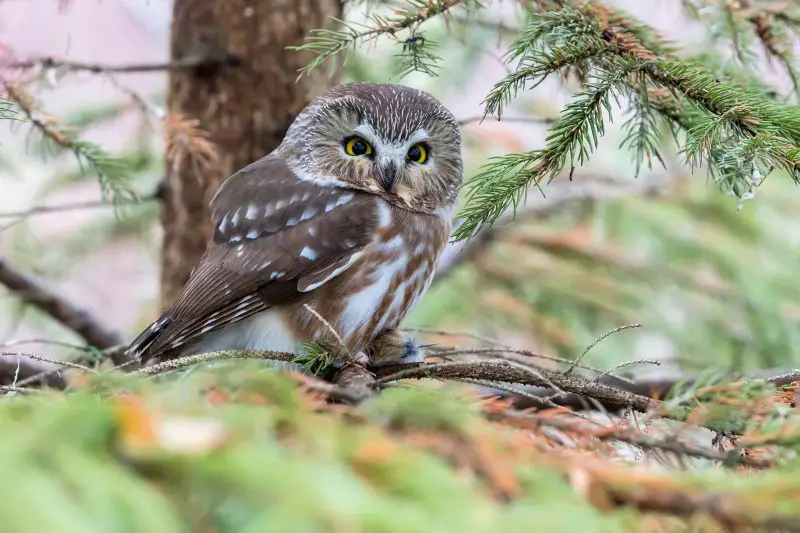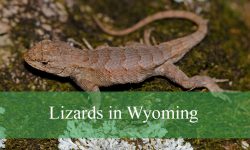When Vermont’s landscape is blanketed in snow and the temperatures plunge, life for many animals becomes a daily struggle for survival. Yet, amid the quiet, white expanse, owls thrive as some of the most adept and stealthy hunters. These nocturnal raptors possess exceptional adaptations that enable them to hunt effectively, even in the harsh conditions of snowy winters.
Owls play a critical role in Vermont’s ecosystem by controlling populations of small mammals and other prey species. Their presence during winter months is vital to maintaining the ecological balance. Understanding what owls hunt in Vermont during snowy winters sheds light on their behaviors, dietary needs, and how they navigate the challenges posed by the cold season.
This article delves deeply into the winter hunting habits of Vermont’s owls. By exploring the species present, their prey selection, hunting strategies, and adaptations, we gain a comprehensive view of these mysterious birds’ survival tactics during one of the toughest times of the year.
The Owl Species of Vermont and Their Winter Presence

Vermont is home to several owl species that are active year-round, including the Great Horned Owl, Barred Owl, Snowy Owl, and Eastern Screech-Owl. Each species has distinct hunting habits and prey preferences, shaped by their size, hunting technique, and habitat.
The Great Horned Owl is among the most common and versatile hunters in Vermont’s winter forests. Its powerful build allows it to tackle a wide range of prey, from rodents to larger mammals. The Barred Owl prefers dense woodlands and is known for hunting during both day and night, adapting its diet to whatever prey is available beneath the snow.
Snowy Owls, although more typically found in the Arctic tundra, sometimes migrate south into Vermont during harsh winters. Their presence adds a unique predatory dynamic, as they specialize in hunting open-field rodents. Meanwhile, the Eastern Screech-Owl, smaller and more secretive, hunts primarily for small mammals and insects, adjusting its diet based on winter prey availability.
Understanding which owls hunt in Vermont during winter is the first step in appreciating how these species survive by targeting different prey types suited to their adaptations and environmental niches.
Small Mammals: The Primary Winter Prey
During Vermont’s snowy winters, small mammals constitute the majority of prey for most owl species. Rodents such as voles, mice, and shrews are particularly important. These mammals remain active beneath the snow, creating a hidden world of tunnels and chambers where they forage for food and evade larger predators.
Voles, in particular, are a crucial food source for owls. Their populations can fluctuate widely but tend to peak during the winter months due to reduced predation pressure and steady food supplies beneath the snow. Owls rely on their acute hearing to detect the movements of these tiny mammals under the snow cover. Their asymmetrical ear placement enables precise localization of prey, even when it is hidden beneath several inches of snow.
Mice, including deer mice and white-footed mice, are another frequent target. These species are resilient and often remain active throughout the winter. Owls hunt them primarily at dusk and nighttime, using stealth and sudden bursts of flight to capture them in open areas or along forest edges.
Shrews, though smaller and less abundant, provide an important protein source. Some owls adapt their hunting techniques to find these fast, elusive creatures. While small, shrews have high metabolic rates and thus serve as nutritious prey for owls struggling to meet energy demands in cold weather.
Larger Mammals and Opportunistic Prey
While small mammals dominate the winter diet of Vermont owls, larger prey items occasionally supplement their meals. Great Horned Owls, for example, are capable of taking down rabbits, squirrels, and even skunks. During snowy winters, rabbits often concentrate near forest edges or in thickets, making them accessible targets.
Squirrels, including both gray and red species, are less active in winter but may still be hunted if found. Owls take advantage of their relative sluggishness during cold snaps, preying on juveniles or weakened individuals. Opportunistic feeding on these larger mammals allows owls to conserve energy by securing substantial meals that can sustain them longer between hunts.
Other opportunistic prey includes birds, such as grouse and small songbirds that remain in Vermont over winter. Owls may hunt these birds during the day or night, particularly when small mammals are scarce. Insects are generally less significant in the diet during winter but may occasionally supplement nutrition when other prey are hard to find.
Hunting Strategies and Adaptations in Snowy Conditions
Owls have evolved remarkable adaptations that enable them to hunt effectively during snowy Vermont winters. Their soft, fringed feathers muffle flight sounds, allowing them to approach prey silently. This stealth is essential when hunting small mammals that are sensitive to vibrations and sounds.
The ability to fly nearly silently also benefits owls when hunting over snow-covered ground, where even minor noises can alert prey. Owls use a combination of keen vision and exceptional hearing to locate prey beneath snow. Their facial discs act like satellite dishes, focusing sound to their ears and enhancing their ability to pinpoint movements.
Owls employ a “sit-and-wait” hunting strategy, perching quietly and listening for prey before launching a swift, decisive attack. Some species also engage in low, slow flights over open fields or along woodland edges, using their eyesight to detect movement against the snow.
In addition, owls may use snowdrifts or elevated perches to gain vantage points. Snow itself can be both a hindrance and an advantage: while it conceals prey, it also restricts the movements of some small mammals, making them more predictable targets. Owls capitalize on this by hunting near animal runways or entry holes in the snowpack.
Seasonal Changes in Prey Availability
Winter prey availability in Vermont fluctuates due to temperature shifts, snow depth, and ecological cycles. Early winter often provides abundant prey as small mammals prepare for colder months with plentiful food caches and moderate snow cover. During this time, owls may find hunting relatively easier.
As winter progresses and snow deepens, small mammals may retreat deeper under the snowpack or reduce activity. Owls adjust by expanding their hunting areas or targeting different prey. For example, when voles become scarce or hard to find, owls may focus more on mice or birds.
Late winter, just before spring, can be the most challenging period. Prey populations are often at their lowest, and owls must rely heavily on their hunting efficiency and experience to survive. These seasonal shifts highlight the owls’ need for flexibility in diet and hunting tactics.
Impact of Snow Cover and Weather Patterns
Snow cover directly influences owl hunting success in Vermont. Deep, crusted snow can hinder the movements of prey but also make it difficult for owls to capture them. In contrast, lighter or patchy snow allows more access to small mammals.
Weather conditions such as wind, temperature, and precipitation affect hunting behavior. On calm, cold nights, owls may be more active, while heavy snowfall or storms can reduce hunting opportunities. Conversely, snowfall can drive prey into open or exposed areas, providing hunting advantages.
The dynamic relationship between snow and prey behavior creates a complex environment in which owls must constantly adapt. Their survival depends on reading these subtle environmental cues and responding appropriately.
Interaction with Other Predators
Owls in Vermont share their hunting grounds with other predators such as foxes, coyotes, and weasels. While direct competition is limited by different hunting times or prey preferences, overlapping diets occasionally lead to interactions.
Owls often occupy a unique ecological niche as nocturnal hunters specializing in small mammals under snow cover. Their silent flight and acute senses give them an advantage over many ground-based predators. However, competition for prey can intensify during harsh winters when food is scarce.
In some cases, owls may scavenge from kills made by other predators or lose prey to scavengers. This complex predator-prey dynamic is part of Vermont’s winter ecosystem and influences how owls adjust their hunting strategies.
Conservation and Human Impact on Winter Hunting
Human activity affects owl hunting in multiple ways. Habitat loss, light pollution, and climate change all influence prey availability and owl behavior. Urban expansion can reduce forested areas where owls perch and hunt, forcing them into less optimal environments.
On the other hand, some human landscapes create new hunting opportunities. Farms and open fields can support large rodent populations, attracting owls. Artificial lighting can alter prey behavior, sometimes making hunting easier or harder depending on conditions.
Conservation efforts in Vermont focus on protecting owl habitats, maintaining forest cover, and educating the public about the importance of these raptors. Preserving natural hunting grounds ensures that owls continue to thrive even in the face of changing winters.
Conclusion: Masters of Winter Predation
Owls in Vermont exhibit extraordinary adaptations and behaviors that allow them to hunt effectively during snowy winters. Their diet primarily consists of small mammals like voles and mice, supplemented by larger mammals and birds when available. Through stealth, acute senses, and flexible hunting strategies, these silent predators maintain their crucial role in the ecosystem.
Understanding what owls hunt during Vermont’s winters reveals the delicate balance of life in cold climates. It also highlights the resilience of wildlife adapting to seasonal hardships and changing environments. Protecting these magnificent birds and their prey ensures that Vermont’s winter nights remain alive with the quiet hunt of owls for generations to come.
FAQs About Owls Hunting in Vermont During Winter
What is the main prey of owls in Vermont during snowy winters?
The main prey includes small mammals such as voles, mice, and shrews that remain active beneath the snow.
Can owls hunt effectively under deep snow?
Yes, owls use their exceptional hearing and silent flight to detect and capture prey beneath snow cover.
Do all owl species in Vermont hunt during winter?
Most resident owl species, including Great Horned Owls, Barred Owls, and Eastern Screech-Owls, hunt throughout the winter months.






